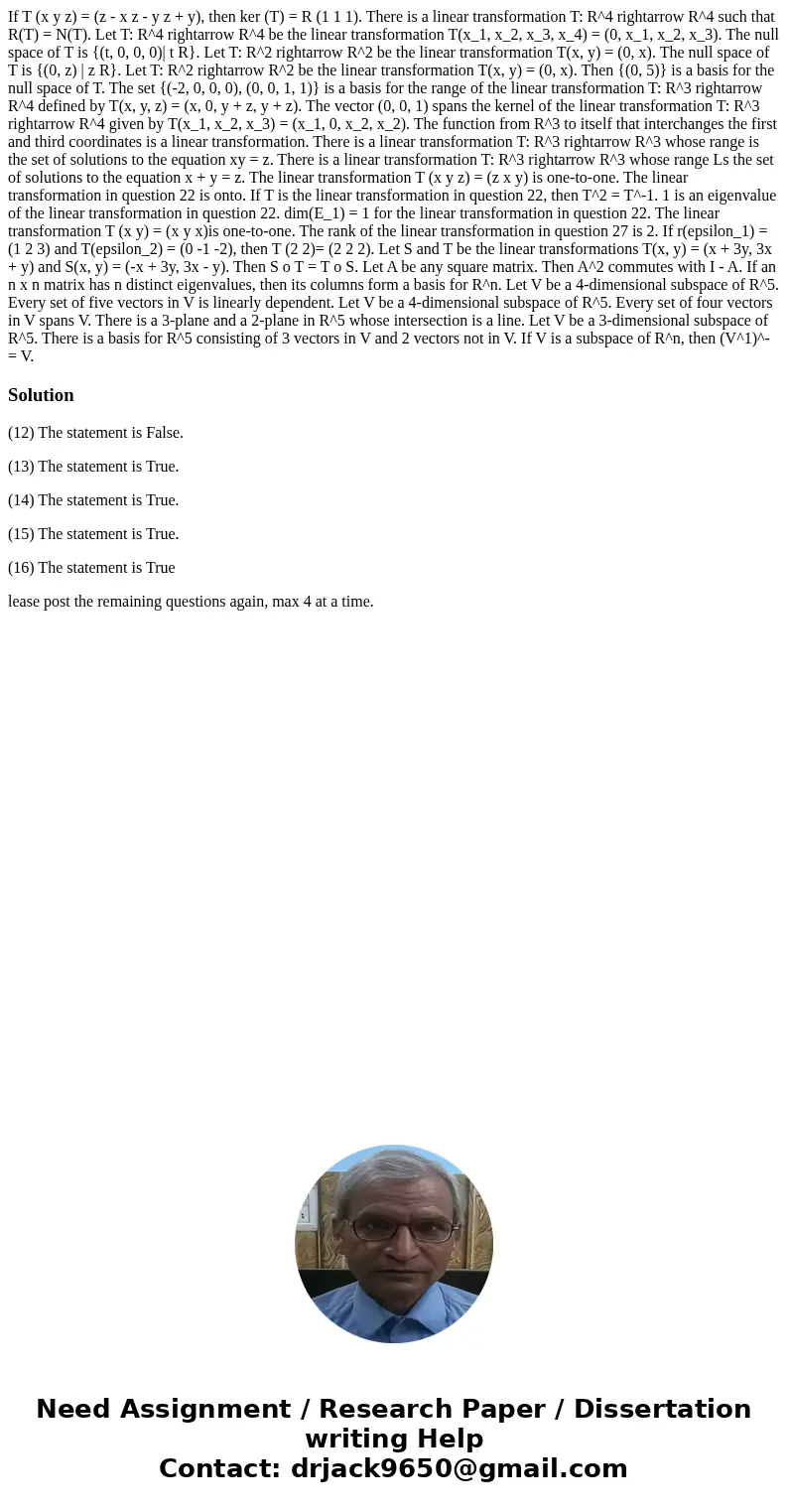If T x y z z x z y z y then ker T R 1 1 1 There is a li
If T (x y z) = (z - x z - y z + y), then ker (T) = R (1 1 1). There is a linear transformation T: R^4 rightarrow R^4 such that R(T) = N(T). Let T: R^4 rightarrow R^4 be the linear transformation T(x_1, x_2, x_3, x_4) = (0, x_1, x_2, x_3). The null space of T is {(t, 0, 0, 0)| t R}. Let T: R^2 rightarrow R^2 be the linear transformation T(x, y) = (0, x). The null space of T is {(0, z) | z R}. Let T: R^2 rightarrow R^2 be the linear transformation T(x, y) = (0, x). Then {(0, 5)} is a basis for the null space of T. The set {(-2, 0, 0, 0), (0, 0, 1, 1)} is a basis for the range of the linear transformation T: R^3 rightarrow R^4 defined by T(x, y, z) = (x, 0, y + z, y + z). The vector (0, 0, 1) spans the kernel of the linear transformation T: R^3 rightarrow R^4 given by T(x_1, x_2, x_3) = (x_1, 0, x_2, x_2). The function from R^3 to itself that interchanges the first and third coordinates is a linear transformation. There is a linear transformation T: R^3 rightarrow R^3 whose range is the set of solutions to the equation xy = z. There is a linear transformation T: R^3 rightarrow R^3 whose range Ls the set of solutions to the equation x + y = z. The linear transformation T (x y z) = (z x y) is one-to-one. The linear transformation in question 22 is onto. If T is the linear transformation in question 22, then T^2 = T^-1. 1 is an eigenvalue of the linear transformation in question 22. dim(E_1) = 1 for the linear transformation in question 22. The linear transformation T (x y) = (x y x)is one-to-one. The rank of the linear transformation in question 27 is 2. If r(epsilon_1) = (1 2 3) and T(epsilon_2) = (0 -1 -2), then T (2 2)= (2 2 2). Let S and T be the linear transformations T(x, y) = (x + 3y, 3x + y) and S(x, y) = (-x + 3y, 3x - y). Then S o T = T o S. Let A be any square matrix. Then A^2 commutes with I - A. If an n x n matrix has n distinct eigenvalues, then its columns form a basis for R^n. Let V be a 4-dimensional subspace of R^5. Every set of five vectors in V is linearly dependent. Let V be a 4-dimensional subspace of R^5. Every set of four vectors in V spans V. There is a 3-plane and a 2-plane in R^5 whose intersection is a line. Let V be a 3-dimensional subspace of R^5. There is a basis for R^5 consisting of 3 vectors in V and 2 vectors not in V. If V is a subspace of R^n, then (V^1)^- = V.
Solution
(12) The statement is False.
(13) The statement is True.
(14) The statement is True.
(15) The statement is True.
(16) The statement is True
lease post the remaining questions again, max 4 at a time.

 Homework Sourse
Homework Sourse